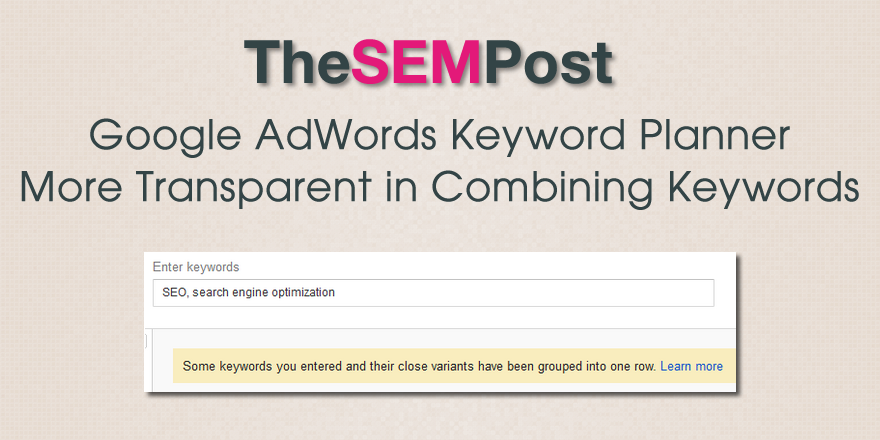

Earlier this year, Google AdWords began combining data for search variants in the Keyword Planner, but did it in a way that did not make it clear that Google was doing so. For example, it showed both SEO and the expanded search engine optimization as both having 673,000 monthly searches, but didn’t note that it was a combined monthly search total, so if someone had searched for either of them, it would show the same monthly search numbers. This resulted in inflated estimates by those who didn’t realize what was happening.

Google combines keywords as search variants in the following situations:
- plurals with non-plurals for any word in the keyword phrase
- acronyms with longhand version
- stemming variants: -er, -ing, -ized, -ed etc keywords (ie. designer, designing, designed)
- words that can be spelled with or without space (ie. car park and carpark)
- words with and without punctuation (ie. kid toys and kid’s toys)
For SEOs, this change makes it very difficult to be able to know which keywords to target based on volume. Previously, Google never combined search variants, so you could see that Keyword A had 500,000 monthly searches while Keyword B had only 10,000 monthly searches. Now they are both combined to show 500,000, even though one phrase has only a fraction of searches that the other does – which then becomes a monthly search range of “100K to 1M” for those without active AdWords campaigns.
With advertisers though, it does make sense for the Keyword Planner to show search variants as default.
H/T RankRanger
Jennifer Slegg
Latest posts by Jennifer Slegg (see all)
- 2022 Update for Google Quality Rater Guidelines – Big YMYL Updates - August 1, 2022
- Google Quality Rater Guidelines: The Low Quality 2021 Update - October 19, 2021
- Rethinking Affiliate Sites With Google’s Product Review Update - April 23, 2021
- New Google Quality Rater Guidelines, Update Adds Emphasis on Needs Met - October 16, 2020
- Google Updates Experiment Statistics for Quality Raters - October 6, 2020

